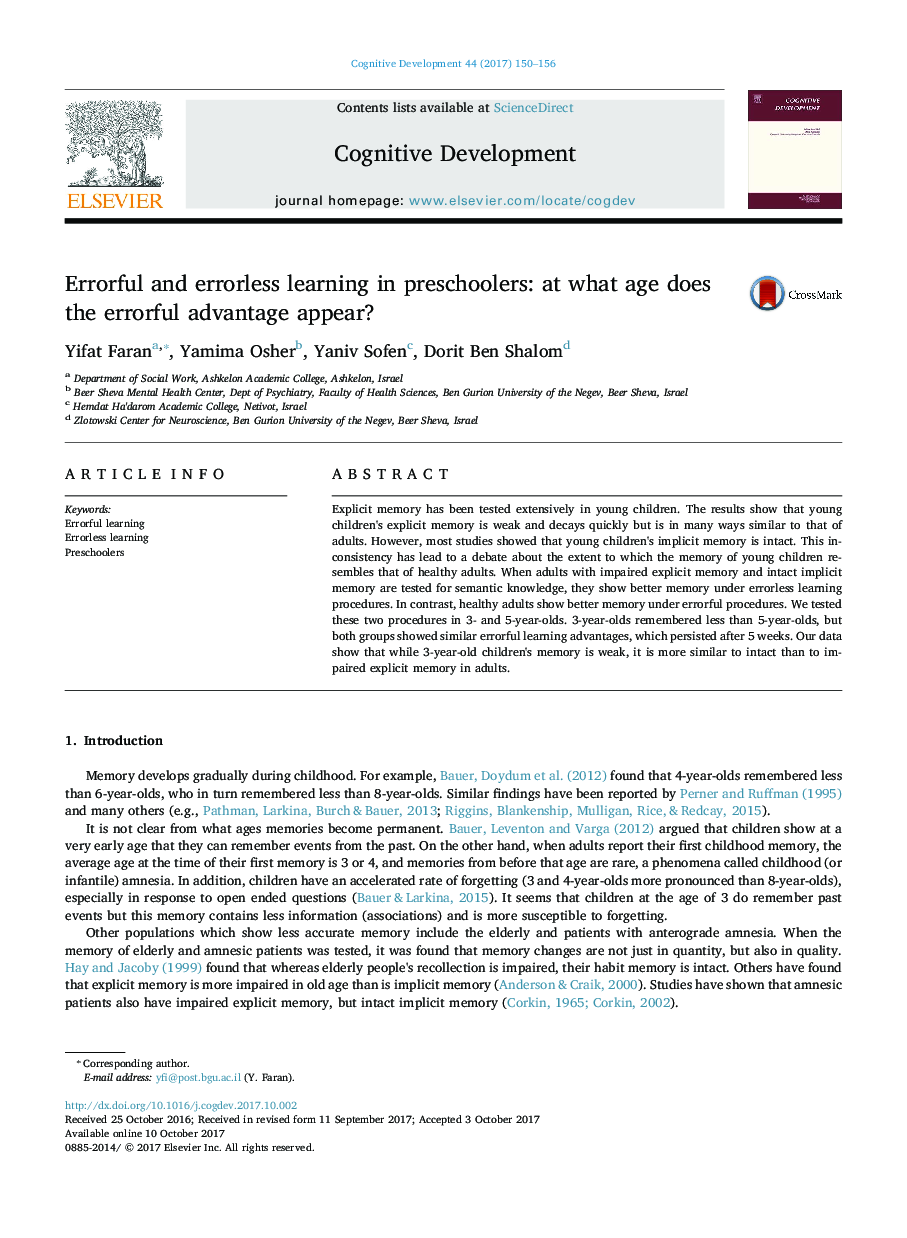| کد مقاله | کد نشریه | سال انتشار | مقاله انگلیسی | نسخه تمام متن |
|---|---|---|---|---|
| 5039634 | 1473339 | 2017 | 7 صفحه PDF | دانلود رایگان |
- The memory of younger children is weaker than that of older children and adults, but some patterns of memory seem the same.
- Errorful learning was a more efficient learning procedure than errorless learning for both 3 and 5-year-olds.
- This is similar to healthy adults, but different than adults with amnesia.
Explicit memory has been tested extensively in young children. The results show that young children's explicit memory is weak and decays quickly but is in many ways similar to that of adults. However, most studies showed that young children's implicit memory is intact. This inconsistency has lead to a debate about the extent to which the memory of young children resembles that of healthy adults. When adults with impaired explicit memory and intact implicit memory are tested for semantic knowledge, they show better memory under errorless learning procedures. In contrast, healthy adults show better memory under errorful procedures. We tested these two procedures in 3- and 5-year-olds. 3-year-olds remembered less than 5-year-olds, but both groups showed similar errorful learning advantages, which persisted after 5 weeks. Our data show that while 3-year-old children's memory is weak, it is more similar to intact than to impaired explicit memory in adults.
Journal: Cognitive Development - Volume 44, October 2017, Pages 150-156
